-
Step 1: What's the Quality of Your Forage?
Test Your Hay -
Step 2: What are my forage test results telling me?
Analyze the Results -
Step 3: Product Recommendations
What Products Work For You?
Test Your Hay

Taking hay samples is one step that can ensure the nutrient requirements of your animals are being met. By having a general idea of the quality of your forage, it will enable you to provide the lowest cost ration possible to meet your performance expectations.
There are two ways you can take hay samples: with a hay probe or by hand. Regardless of the technique used, the sample should be representative of the entire lot. This means that you should sub-sample around 10% of the total bales in the lot from a minimum of 10 corings and/or hand grabs.
What do I need to take a hay sample?
The tools needed for samples collected with a hay probe are a cordless drill, hay probe, permanent marker, a 1 gallon re-sealable plastic bag and a clean 5 gallon bucket. If taking hand grab samples, you will only need a permanent marker, a 1 gallon re-sealable plastic bag and a 5 gallon bucket.
How to take a proper hay sample?
- Select random bales throughout the lot you wish to sample.
- Obtain a sample from as far inside the bale as possible.
- Sampling with hay probe: Reach as far as possible inside the bale with your coring tool. This can be more difficult when bales are wet or when the hay is very mature. In those cases, a spare battery for the drill is helpful especially if a large number of bales are to be probed.
- Sampling hay by hand: It helps to use the short pipe to pry open the bale. The goal is to reach inside with your hand open and grasp tightly a handful of hay material. You want to try to not strip the leaves off when you do the grabbing, so many small handfuls are better than one large handful.
- Place sample from bale into a 5 gallon bucket.
- Repeat steps 2 and 3 until you have at least 10 samples from 10% of the bales in the lot you are testing. All samples will be placed into the same 5 gallon bucket.
- After sampling the desired number of bales, the entire sample should be pulled apart and mixed thoroughly. You cannot rely on the lab to mix your sample.
- Dump sample into re-sealable plastic bag and remove any excess air. It is fine if the bag is not completely full, but you will need approximately 1/2 a quart of material in the bag
What to do with your collected hay samples?
To obtain a complete nutrient analysis, VitaFerm customers planning to use VitaFerm in their ration can contact their local dealer about hay testing. Dairyland Laboratories, Inc., completes lab analysis and results will be emailed to the producer, dealer and ASM.
The next step in ensuring your nutritional program will help you maximize animal performance is working with your local dealer and/or ASM. They will submit your results to the nutritionists at BioZyme®. Our nutrition team can provide assistance in ration formulation based off of your production scenario to help you better achieve your performance expectations.
VitaFerm® Hay Analysis Report
Knowing the nutrient value of your hay can increase performance and save you money. With that in mind, VitaFerm is excited to offer this new tool to help you make an educated decision on when you should supplement with protein and/or energy to achieve maximum performance goals.
How to Use the VitaFerm Hay Analysis Report
- First, you will need to take hay samples. For information on how to take and submit please follow this link.
- After you receive your hay analysis back from the lab, enter the values for protein and energy of your hay and the month you began calving and hit "calculate".
- The bar chart will then be populated to show the protein and energy needs for your herd relative to when you calve.
Your Data
Example lab analysis for samples tested through VitaFerm. If you have questions about where to find your data please contact our team.
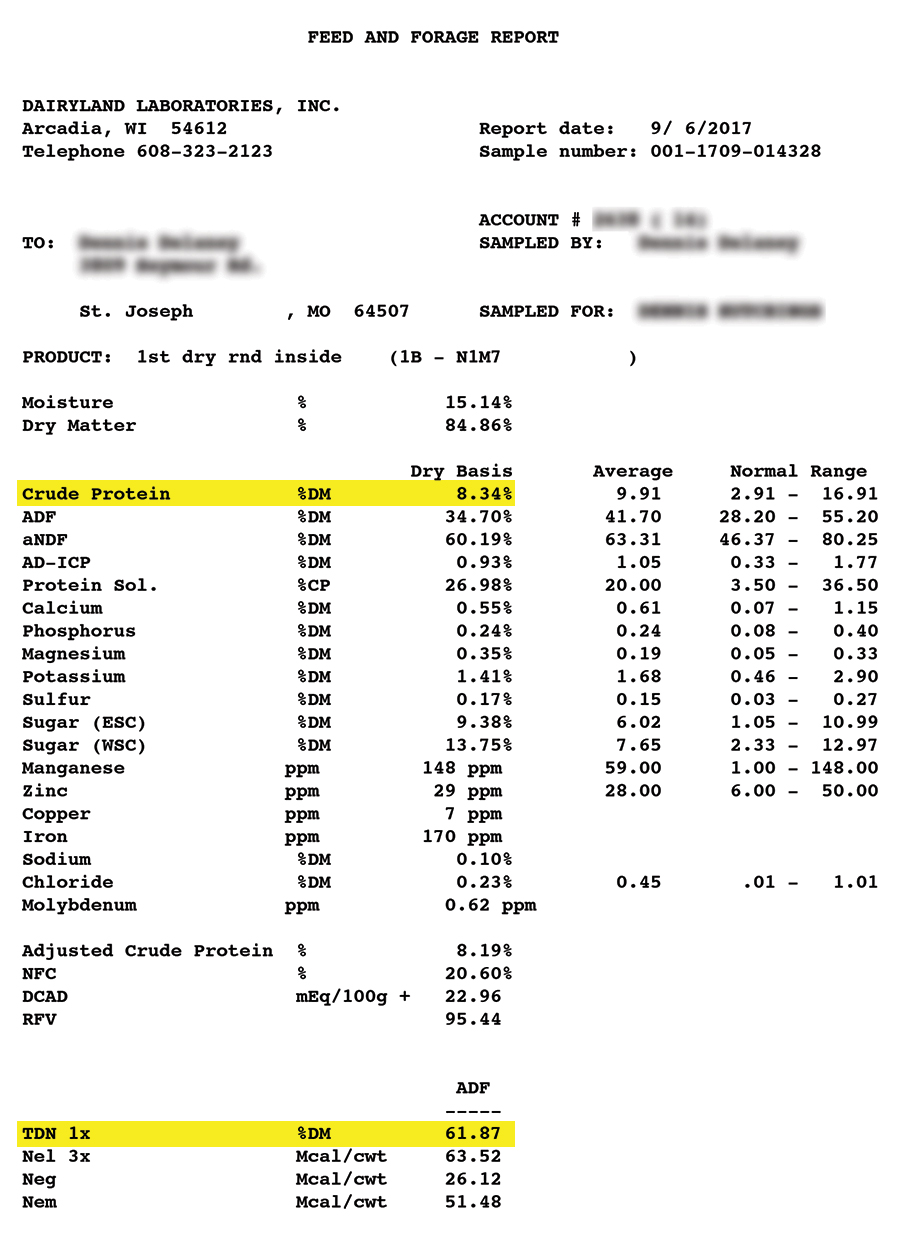
Protein Required vs Your Hay
Energy Required vs. Your Hay
Protein Surplus/Deficiency
Energy Surplus/Deficiency
*The nutrient requirements reflected in these graphs are based on a 1400lb cow with high milk potential. (Source: NRC, 2016)
WHAT DOES IT MEAN?
Using the Nutrient Requirements of Beef Cattle from NRC, we are able to calculate the percentage of protein and energy your hay is currently providing vs the recommended amount for optimal performance. We then use that data to create a guideline that shows what months since calving you should supplement with protein and/or energy to achieve maximum performance goals.
At any time your graph shows RED, it is recommended you supplement your herd with protein and/or energy to meet the requirements.
Save yourself some money! At any time your graph shows GREEN, your livestock are meeting their daily requirements with the forage you are providing and are NOT in need of any additional supplementation.
Protein Solutions
- Corn Gluten Feed
- Cotton Seed Meal
- DDGs
- Soybean Meal
- Sunflower Meal
VitaFerm Products/Solutions
All VitaFerm Products contain 20% protein.
Concept•Aid Protein Meal & Protein Tub
A combination of Concept•Aid® breeding mineral and 20% natural protein in a meal or tub for beef cattle. Specifically designed for reproductive success when fed 60 days pre-calving through 60 days post-breeding. Especially beneficial in A.I. and E.T. breeding programs. Includes natural protein for when forage quality is low.
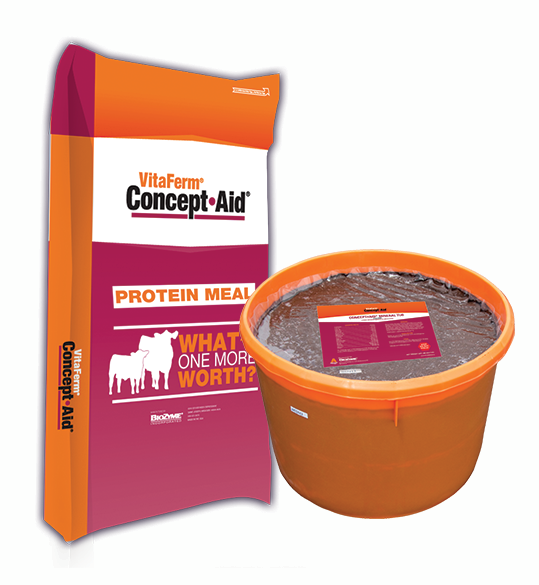
Power Keg
A convenient, natural protein supplement with vitamins, minerals, and organic trace minerals in a pressed keg, best suited for situations where forage quality is low.
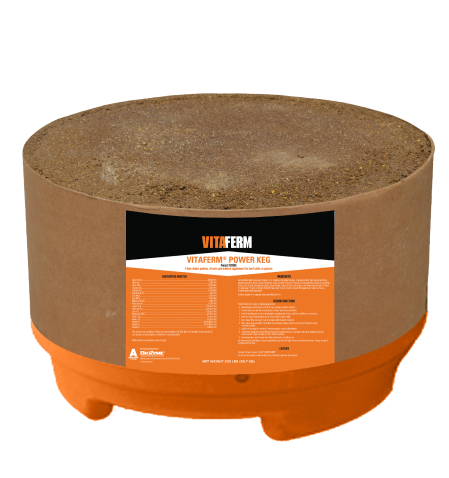
30-13% Tub
A 30% protein cooked tub for beef cattle on forage that provides the convenience of an economical protein tub along with vitamins and minerals to promote general herd health and maintenance. It includes no more than 13% equivalent crude protein from non-protein nitrogen allowing for a higher protein level in a low feeding rate.
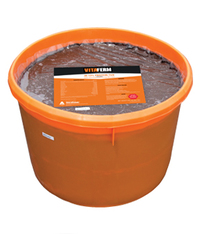
Energy Solutions
- Barley
- Corn
- Oats
- Sorghum
- Wheat Midds
VitaFerm Products/Solutions
Amaferm® is a precision prebiotic designed to enhance digestibility by amplifying nutrient supply for maximum performance. Increased digestibility can increase performance parameters such as average daily gain and/or milk production.
Amaferm, the key ingredient found in ALL VitaFerm products, increases energy by approximately 16%, each bag of VitaFerm provides enough energy to replace 200 lbs. of corn.
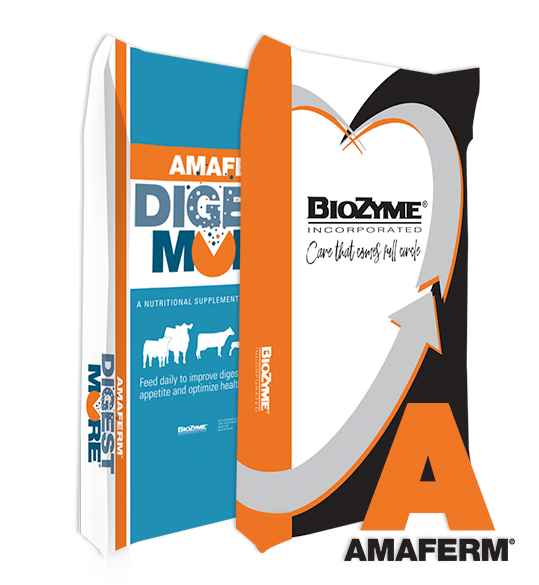
Ration Balancing
Once testing has been performed and we have a full understanding of the value of your hay, BioZyme’s team of nutritionists can provide complementary ration balancing to help develop a ration that works for you utilizing the resources you have available. For more information please contact Susan Day.
Example Report
Example lab analysis for samples tested through VitaFerm. If you have questions about where to find your data please contact our team.

